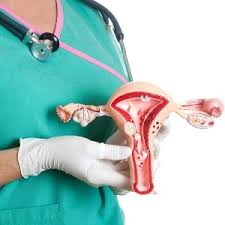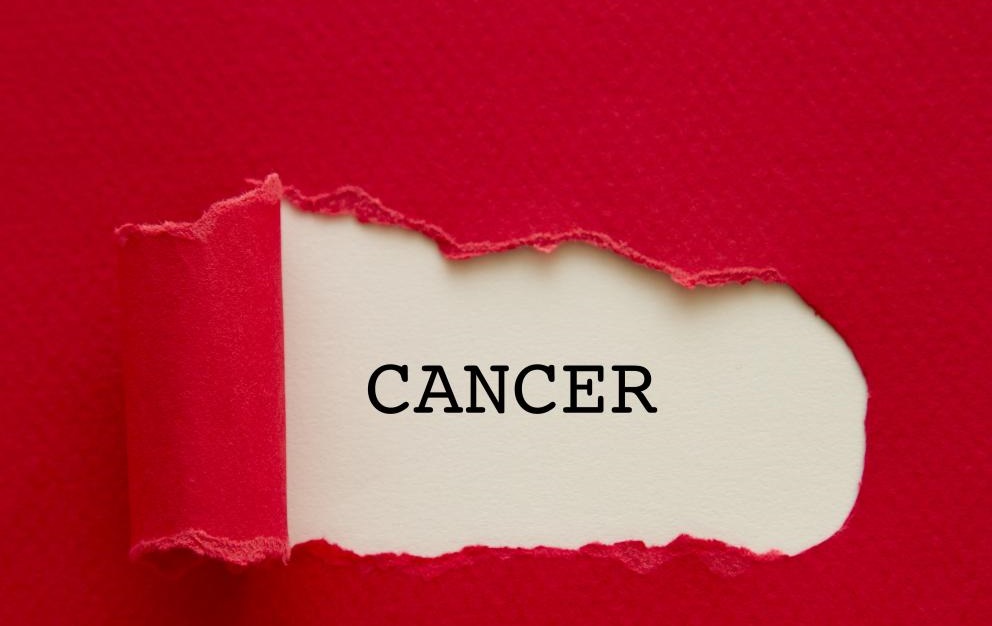Cervical cancer is a form of cancer which occurs in the cervix or the lower part of the uterus in women, which opens up into the vagina. Its different from the other cancers that occur in other parts of the uterus and has a high rate of being cured if detected early.
Causes of Cervical Cancer: Cervical cancer is usually caused when abnormal cells present in the cervix, get out of control. Usually, major cases of cervical cancer are caused by a virus known as the human papillomavirus or HPV. This virus gets transmitted from one person to another by sexual means or sexual contact. Abnormal changes in the cervix cells lead to cervical cancer. Usually, cell changes occur in the transformation zone in the cervix as the cells tend to change constantly, thereby leading to cancer.
Symptoms:
1. Abnormal vaginal bleeding between menstrual phases, after menopause or after having sex.
2. Pain is experienced during sex.
3. Abnormal vaginal discharge is produced.
4. Abnormal changes in the menstrual cycle.
5. Anemia due to abnormal bleeding from the vagina.
6. Recurring pain in the pelvis, back or leg.
7. Several urinary problems due to the blockage of the uterus.
8. Urine or stool leakage into the vagina.
9. Loss of weight.
How it can be diagnosed?
A routine screening test should be undertaken to observe any abnormal cell changes in the cervix and also for the screening for cervical cancer. Taking regular Pap smear test is recommended to detect abnormal cell changes so that cervical cancer can be prevented before hand. Other diagnostic tests include, Colposcopy and cervical biopsy to determine the presence of abnormal cells in the cervix, Endocervical biopsy and Cone biopsy.
Treatment options available:
Cervical cancer can be treated when detected at an early stage. The type of treatment depends on the stage and type of cervical cancer. The most common treatment methods are as follows:
Surgery can be undertaken for removal of the cancer. Several types of surgeries exist and the ideal one depends on the location and severity of the cervical cancer.
Radiation therapy involves the use of high dosage X-rays and implants within the vaginal cavity. This kills the cancer cells and is used in some specific stages of cervical cancer. This therapy is often used alongside surgery.
Chemo-radiation is a combination of radiation therapy and chemotherapy. This procedure can be used at various stages of cervical cancer.
Chemotherapy involves using medicines for killing cancer cells. It is used in advanced stages of cervical cancer.
Pelvic cancer is caused by abnormal cell changes in the pelvis. It is a common kind of cancer and can cause negative effects on the health. Proper diagnosis and treatment are essential for treating pelvic cancer.
Breast-feeding not only protects babies from premature deaths and serious diseases but also mothers from breast cancer and heart attacks, among others, suggests a study.
According to the study published in the journal Maternal and Child Nutrition, breast-feeding helps mothers to reduce chances of getting diagnosed with breast cancer, per-menopausal ovarian cancer, diabetes, hypertension and heart attacks.
For children breast-feeding reduces the risk of diseases like acute lymphoblastic leukemia, ear infections, Crohn's disease, ulcerative colitis, gastrointestinal infections, lower respiratory tract infections, obesity, necrotizing enterocolitis and sudden infant death syndrome (SIDS).
"Breast-feeding has long been framed as a child health issue, however it is clearly a women's health issue as well. Breast-feeding helps prevent cancer, diabetes and heart disease, yet many women have no idea breast-feeding has any of these benefits," said Eleanor Bimla Schwarz, Professor at University of California - Davis Health System in the US.
For the study, the research team modeled two groups: One was an "optimal" group in which the majority of moms breastfed as recommended. That group was compared with a "sub optimal" group, in which young mothers breastfed less than the recommended guidelines.
Using existing research and government data, they projected the rates and costs of diseases that breastfeeding is known to reduce, along with the rates and costs of early deaths from those diseases.
"Breast-feeding is far more beneficial in preventing disease and reducing costs than previously estimated," said Melissa Bartick, Assistant Professor at the Harvard Medical School.
Currently, 22 per cent of employed mothers return to work within 10 days of childbirth. Paid leave keeps mothers and babies together, which is essential for breast-feeding. Enacting paid family leave will impact the lifelong health of women and children, suggested the study.
The study authors said their findings underscore the importance of providing women with the support they need to breast-feed their babies, beginning at birth.
"The study results underscore the importance of policies that make it possible for women to breastfeed," Alison Stuebe, Associate Professor at the University of North Carolina, US.
Two reports have warned of an explosion in cancer deaths among women, with a toll, mainly from breast cancer, of some 5.5 million per year by 2030 roughly the population of Denmark. This represented a near 60-percent increase in less than two decades, said an analysis conducted by the American Cancer Society (ACS), released Tuesday at the World Cancer Congress in Paris.
As the global population grows and ages, the highest toll will be among women in poor and middle-income countries, it said, and much of it from cancers which are largely preventable.
"Most of the deaths occur in young- and middle-aged adults,", placing a heavy burden on families and national economies, said Sally Cowal, senior vice president of global health at the ACS, which compiled the report with pharmaceutical company Merck.
A second report, published in The Lancet medical journal on Wednesday, said the number of women diagnosed with breast cancer alone could almost double to 3.2 million a year by 2030 from 1.7 million in 2015.
For cervical cancer, the number of diagnoses could "rise by at least 25 percent to over 700,000 by 2030," mainly in low- and middle-income countries, said a statement from The Lancet.
Cancer is already killing one in seven women around the world, said the ACS report -- the second highest cause of death after cardiovascular disease.
All four of the deadliest cancers -- breast, colorectal, lung and cervical cancer -- are mostly preventable or can be detected early, when treatment is more successful.
In poorer countries, a much smaller proportion of cancer cases are diagnosed and treated than in rich ones, while a much bigger group dies.
The relative burden is growing for developing countries as people live longer due to better basic healthcare.
Women in these countries are also increasingly exposed to known cancer risk factors "associated with rapid economic transition," said Cowal, "such as physical inactivity, unhealthy diet, obesity, and reproductive factors" such as postponing motherhood.
"Due to these changes, cancers that were once common only in high-income countries are becoming more prevalent," said the report entitled "The Global Burden of Cancer in Women."
- Regional differences -
According to the International Agency for Research on Cancer, there were 6.7 million new cancer cases and 3.5 million deaths among women worldwide in 2012.
Of these, 56 percent of cases and 64 percent of deaths were in less developed countries.
"These numbers are expected to increase to 9.9 million cases and 5.5 million deaths among females annually by 2030 as a result of the growth and ageing of the population," said the ACS report.
The biggest concentration is in eastern Asia, with 1.7 million cases and a million deaths in 2012, mainly in China.
The highest ratio of cancer cases per population group are still reported in high-income countries in Europe, the Americas and Asia, but this was partly due to better access to screening and detection.
Deaths, however, were proportionally much higher in low- and middle-income countries with reduced access to diagnosis and treatment. The countries with the highest death rate were Zimbabwe, Malawi, Kenya, Mongolia and Papua New Guinea.
Breast and lung cancer are the two most common types in both rich and poor nations, with colorectal cancer the number three killer in developed countries and cervical cancer in less developed ones.
Cervical cancer can be staved off by vaccination against the cancer-causing Human papillomavirus (HPV) and can be easily detected through regular Papanicolaou (pap) test screens.
The Lancet report, comprised of three research papers, said a basic cancer control package could be introduced in low- and middle-income countries for as little as $1.72 (1.55 euros) per person -- the equivalent of just three percent of current health spending in these countries.
Universal HPV vaccination of all 12-year-old girls could prevent 420,000 deaths worldwide over their lifetime.
"The global community cannot continue to ignore the problem -- hundreds of thousands of women are dying unnecessarily every year," said Richard Sullivan of King's College London, who co-authored The Lancet report.
"Not only are the costs of essential cancer services for women lower than expected, but scale-up of diagnostic, surgical and treatment services are a highly effective investment compared the devastating economic cost to countries, communities and families."
We live in a world of technology. Thanks to all sorts of gadgets and apps, we now have easy access to whatever information we seek. Coming to healthcare too, there are various apps available now that can help you in the need of the hour. Take Bollywood legend Amitabh Bachchan’s recently launched an app for breast cancer as an example, which is named 'ABC of Breast Health'. This is the first-ever mobile app in the world dedicated to breast health and is launched in 12 most popular languages in the country. It's conceived, created and designed by Ushalaskhmi Breast Cancer Foundation.
Not many maybe aware of this, but Mr. Bachchan is a survivor of tuberculosis and Hepatitis B. In the recent years he has been associated with various health campaigns like Polio, Hepatitis B, Tuberculosis and Diabetes to spread awareness. At the launch of the app, the actor said that timely detection, treatment and awareness can help a person survive any disease. He shared his own story as an example to drive his point home.
"In 2005 when I was diagnosed with Hepatitis B, my 75 per cent liver was already damaged. I have been surviving with my 25 per cent liver since then. Because the disease was detected at a time and proper care was taken, today I am standing in front of you people.”
“In 2007, I was diagnosed with tuberculosis at an early stage, so I was able to take a treatment and come out of it. In short, I am saying from my life experiences, timely detection of any diseases is always beneficial," said Mr. Bachchan.
"Since I have been associated with various health campaigns, I have realised that people have very less knowledge about such diseases and are living with many misconceptions. This app will help commoners to gain a general awareness about breast cancer," he added.
The app is available on Google Play and Apple for free downloading. A proposal has also been submitted to the Health Ministry to consider incorporating the application in the official health portal of the Union Government.
Having your last meal before 9 pm or at least two hours before going to bed could lower the risk of breast and prostate cancer, suggests a new study.
Compared to those who have supper after 10 pm or those who go to bed right after the meal, people who take their evening meal before 9 pm or wait at least two hours before going to sleep have approximately 20 per cent lower risk of those types of cancers, the findings showed.
"Our study concludes that adherence to diurnal eating patterns is associated with a lower risk of cancer," said lead author Manolis Kogevinas from the Barcelona Institute for Global Health (ISGlobal) in Spain.
"The findings highlight the importance of assessing circadian rhythms in studies on diet and cancer," Kogevinas added.
For the study, published in the International Journal of Cancer, the team analysed data from 621 cases of prostate cancer and 1,205 cases of breast cancer, as well as 872 male and 1,321 female controls.
The participants were interviewed about their meal timing, sleep habits and chronotype -- an individual attribute correlating with the preference for morning or evening activity.
The participants also completed a questionnaire on their eating habits and adherence to cancer prevention recommendations.
The researchers found that cancer patients were more likely to have dinner late at night.
Breast and prostate cancers are also among those most strongly associated with night-shift work, circadian disruption and alteration of biological rhythms.
The research suggests that long-term late-night snacking may have the similar effect to night-shift work and circadian disruption.
"If the findings are confirmed, they will have implications for cancer prevention recommendations, which currently do not take meal timing into account," Kogevinas noted.











